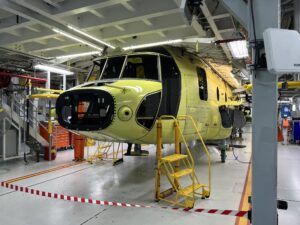
RIDLEY PARK, Pa. – Boeing’s [BA] production level for Chinook heavy-lift helicopters will still be at a “minimum sustaining rate” after factoring in Germany’s plan to procure 60 of the new CH-47 Block II aircraft model, a lead program official said Tuesday. “With the low-rate [production] that we have with the Army right now [for CH-47F Block II and] with Germany, we will still hover maybe a little bit over the minimum sustainable rate,” Heather McBryan, acting vice president and…

 By
By 











